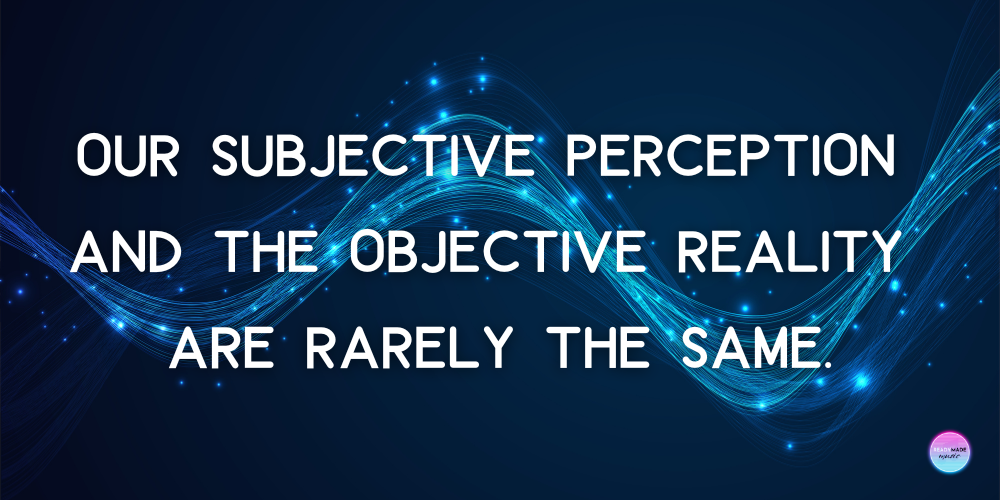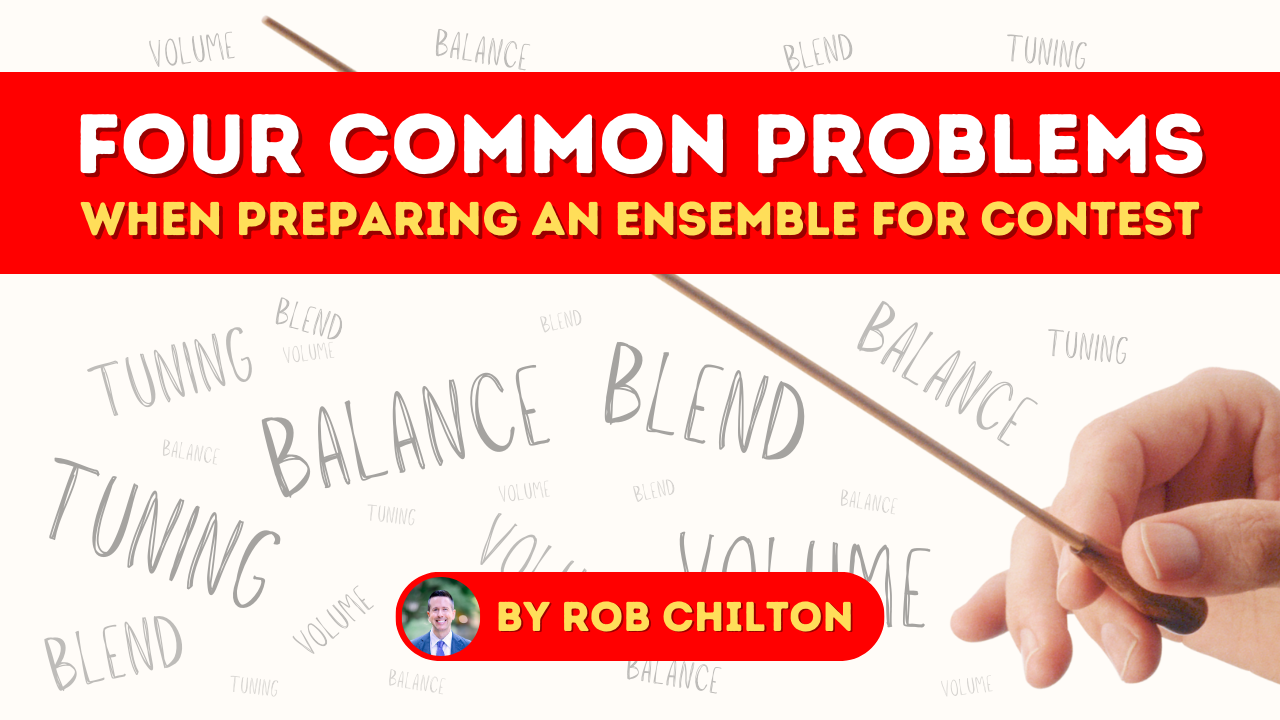Hearing is Believing: How One Recording Can Change Everything for Your Students
Apr 01, 2025
Estimated Read Time: 5-7 minutes
By Rob Chilton
Outside of playing oboe in my high school band, I sang and played guitar in a garage band with a few friends. Our sophomore year, we performed our first hour-long set, which I thought went great—until the next day, when a friend shared with me a recording he had made. As I listened, I was horrified. Nothing sounded the way I thought it did. My voice was wildly out of tune, and the band was equally sloppy.
I’ll never forget hearing that recording—it fundamentally changed how I thought about performing. Before then, playing music had been almost entirely internal, driven by my own feelings and perceptions, without considering critically how the music might sound to others. That audio sparked a personal obsession with recording and playback as a tool for self-improvement. I never wanted to be surprised by the quality of my performance again.
In a time before smartphones and widespread personal computers, I started regularly recording myself with a cassette recorder. This practice soon carried over to my oboe playing and eventually my band directing, where I recorded my ensembles weekly and listened back on my drives to and from work. After nearly three decades of recording myself, I’ve learned that our subjective perception and the objective reality are rarely the same.

Developing a Third-Person Perspective
Every year, I witness young musicians exhibiting the same innocent unawareness I once had. At times, they may appear unconcerned about persistent mistakes or play with little awareness of their surroundings—too loud, too soft, or with poor tone qualities—even when they are capable of doing so correctly and have received adequate instruction and redirection. What could be the reason for this?
Like me in my garage band, they may simply not know. Even if we’ve told them—it’s often not enough. They don’t yet have the awareness to understand. They need to hear it to believe it, and the simplest solution is to record them and play it back. We must help our students develop a third-person perspective in which they strive to hear objectively from the audience’s point of view.

What Counts as a Mistake?
After recording, but before playback, I recommend listing for your students the types of errors you want them to hear. With less experienced musicians, shorter lists promote more targeted listening. Too many items will spread thin their attention. Below is a broad list of common mistakes—though there are many more and each could be more specific.

We can’t assume they know what counts as a mistake. I often remind myself that if they knew it was wrong, they likely wouldn’t be doing it—or at the least, there’d be obvious signs of them trying not to.
Active & Guided Playback
After discussing the types of errors they should be listening for, engage your students in an active or guided playback. Here a few of my favorite methods:
- Targeted Listening: Give them one target such as listening for only wrong notes, squeaks, bumped notes, etc. Then, engage them in a conversation afterwards about what they heard.
- Hands Up: Have your students quickly raise their hands up and then down every time they hear an error. The cascade of hand-raising in response to their playback allows you to see visually what they hear. Also, advise them to only raise their hand when they hear something and not just when those around them hear something. (You can have them try this activity with their eyes closed to increase the authenticity of responses.)
- Slow Motion Replay: Some apps such as TonalEnergy allow you to record and playback at reduced speeds. Try recording your ensemble and playing it back at 50% speed. You’ll hear issues in vertical alignment, technique, and articulation like never before! (Shoutout to my former associate director, Claire Pittman, for introducing me to this technique many years ago—it has been invaluable!)
- The Reference: Like an artist painting from a reference, try playing a professional recording first before playing their recording. Doing so will ground them in a clear tonal model, helping them recognize discrepancies in their own performance. (To avoid excessive rote teaching, I recommend this method after a rough draft of a piece is established.)
- Online: Try uploading rehearsal recordings to an LMS like Google Classroom or Canvas. Then, provide a prompt for students to respond to, either for participation or extra credit. Just be sure to set clear guidelines for responses, such as minimum length, grammar expectations, and whether or not students can reply to each other. Without these, the comment section can quickly go astray.
With all of these, the responses you get from your students will tell you a lot about what they hear. For example, when doing a Hands Up activity, if almost no one raises their hand after a big error, that means they didn't hear it.
Check out our music literacy method!
All the Small Things
Consider this: Without hearing a recording, a child may not see a few small errors as a big deal. Mathematically, just four errors in 100 measures would still be a 96%—if counting each measure as one point. In any other class, that would be an excellent score! The issue is, in an ensemble of 50 players, 4 mistakes per person adds up to 200 mistakes, and 200 mistakes in 100 measures played at 120 bpm equates to one mistake per second.
In contrast, I tell my students if they each practice their music that night and improve just one thing, 50 things will be better the next day. Now, imagine if they refine four or five passages—suddenly, we’re looking at 200 to 300 improvements overnight. When we all work together, everyone's smaller contributions result in larger gains. That’s the power of collective effort.

Final Thoughts
Nowadays, it’s incredibly easy to record your ensemble and play it back. You don’t need a fancy set-up. Simply open an audio recorder on your phone or tablet, such as Voice Memo or similar, and hit record. Then, play it back over a wired or bluetooth connection to a speaker.
Understandably, you might be worried all this will take too much time. My experience has been that the return on investment was almost always significant. Like me in my garage band, when our students don’t hear themselves from an external perspective, they remain rooted in their internal experience—and they can’t change what they don’t know, or believe, is a problem.
Suggested post:
Never miss a new posting!
Check out this short video!
About the author:

Rob Chilton is the creator and owner of Readymade Music, LLC and its content. Previously, Chilton was a middle school band director from 2007-2021. His most recent teaching position was the Head Band Director at Killian Middle School in Lewisville, Texas from 2014-2021.
Under his direction, the Killian Honors Band was named the 2018 Texas Music Educators Association CC Honor Band and performed at the annual 2018 TMEA Clinic/Convention. In 2019, the Killian Honors Band was invited to and performed at The Midwest Clinic in Chicago. Additionally, the Killian Honors Band was named a National Winner in the Mark of Excellence National Wind Band Honors Project in 2015, 2016, 2017, 2018, and 2019.
Chilton is a graduate of Southern Methodist University where he had the opportunity to study music education under the tutelage of Lynne Jackson and Brian Merrill. During his years as a middle school band director, Chilton continued his professional growth under the guidance of his primary clinicians, John Benzer and Brian Merrill.
Chilton’s mission for Readymade Music is to promote the overall well-being of music education and support school music teachers by providing solutions to help make teaching music more efficient and inspirational while increasing engagement for 21st century learners.

© 2025 Readymade Music, LLC
All rights reserved.
The unauthorized distribution and/or reproduction of this work is illegal.





